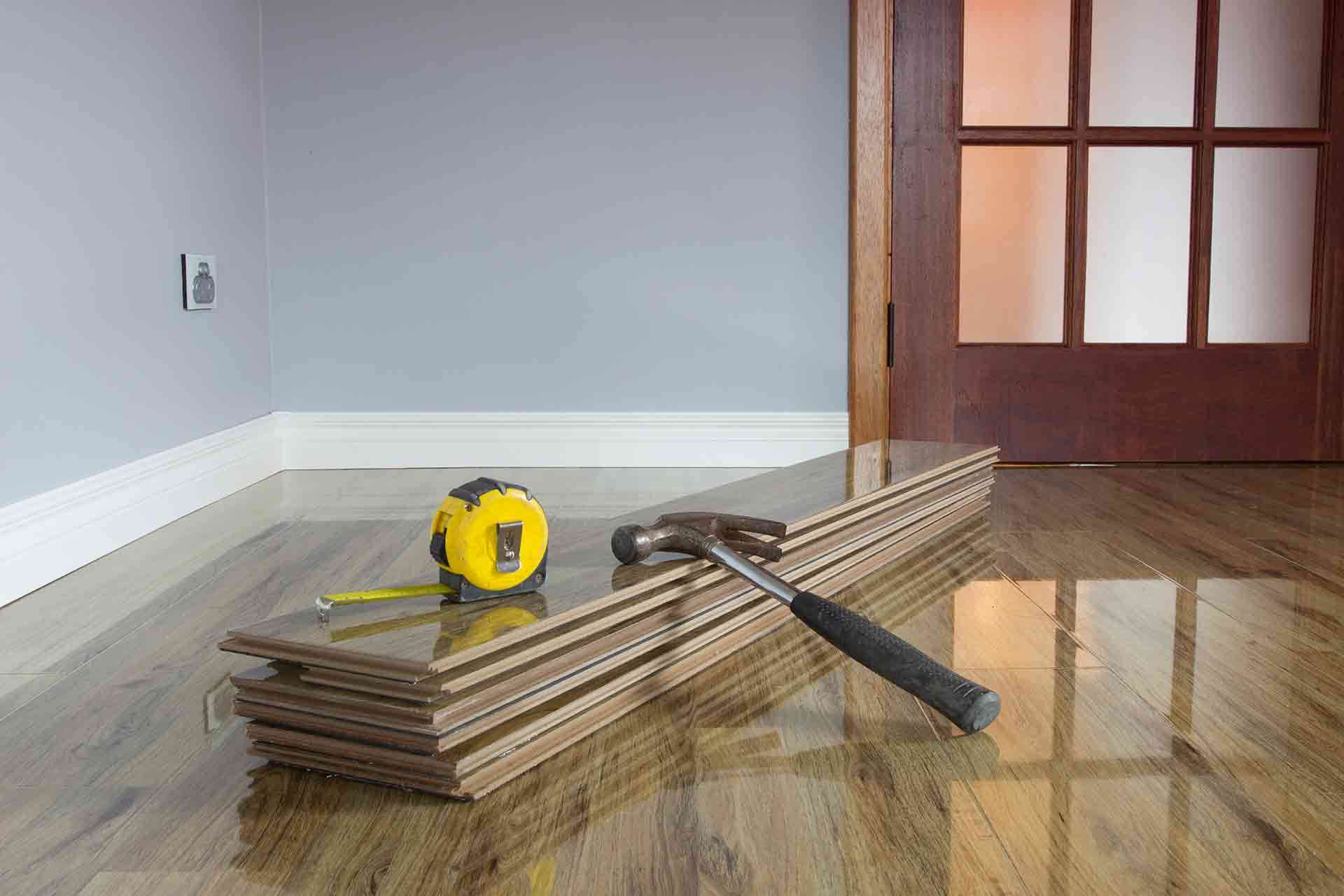Yes, you can install a floating wood floor over tile. It’s important to check that the existing tile is level and stable first.
Installing a floating wood floor can be an excellent way to update your home’s aesthetic without the need for extensive renovation. This type of installation is particularly appealing for those who want to avoid the mess and expense of removing existing tile flooring.
A floating wood floor, typically composed of engineered wood planks that lock together, sits above your tile, creating a smooth, new surface without adhesive. This method not only simplifies the transformation of a room but also preserves the underlying tile. Before proceeding, ensure your tile is clean, free of cracks, and as even as possible to prevent complications post-installation. Embracing this straightforward home improvement project can significantly enhance the look and feel of any space.

Introduction To Floating Wood Floors
Floating wood floors offer a modern, versatile flooring solution. This type of floor is not nailed or glued down. Instead, it sits unattached on top of a subfloor or existing floor, making it incredibly easy to install. These floors consist of planks that lock together at the edges and float above the base floor.
Choosing to install a floating wood floor comes with many advantages. They are perfect for covering unsightly tile and can refresh your home without a full remodel. Floating floors are also known for their ease of installation and repair, plus they are gentle on your budget. This makes them a great choice for both DIY enthusiasts and cost-conscious homeowners.
| Floating Wood Floors | Traditional Hardwood | Laminate | Tile |
| Easy to install and repair | Permanent, long-lasting | Cost-effective, durable | Water-resistant, sturdy |
| Can be installed over existing floors | Requires professional installation | Mimics wood appearance | Wide variety of designs |
| Temporary, changeable | Increases home value | Not as valuable as real wood | Hard, cold surface |
Pre-installation Considerations
Assessing the tile condition is crucial before laying floating wood floors. Tiles must be firmly attached, without cracks or movement. Levelness is also key for a smooth installation. Uneven tiles can cause wood panels to ‘click’ and be unstable.
Proper subfloor preparation ensures strong support for the wood floor. A clean, dry, and flat surface is necessary. Sometimes, a self-leveling underlayment is applied to fix minor issues.
Removing tiles might be needed for severe unevenness. It’s a big job, making sure the subfloor is right for wood flooring. This step prevents future problems and ensures a durable, attractive floor.
The Installation Process
Installing a floating wood floor over tile is possible with the right steps. Begin by cleaning the tile thoroughly. Make sure the tile surface is smooth and level before you start. If you find loose or damaged tiles, fix them to avoid future issues. Then, lay down a suitable underlayment, which is essential for noise reduction and cushioning.
Next, start laying the wood planks, usually from the corner of the room, moving towards the doorway. Remember to leave a small expansion gap around the room’s perimeter; this prevents the wood from bowing or buckling. To cut wood planks, use a fine-tooth saw for precision. Always measure twice and cut once to minimize waste. For tricky areas like vents or columns, careful measuring and cutting are crucial.
- Avoid wet areas since moisture can damage wood floors.
- Don’t rush the installation; take your time to align planks correctly.
- If planks don’t click in place, don’t force them. Check for debris and reposition.
Remember, patience is key during installation, and following instructions is vital for best results.

Maintaining Your New Wood Floor
Maintaining your new wood floor requires simple, regular steps. Gently sweep daily to remove debris and dust. Use a soft-bristled broom for this task. For a deeper clean, select a cleaner designed for wood floors. Always use a damp mop to avoid excessive water. Wipe up spills immediately with a soft, dry cloth to prevent warping.
Wood reacts to moisture and temperature changes. Keep your home’s humidity levels stable. Aim for a range between 35% to 55% humidity. This balance reduces wood expansion and contraction. Manage temperature by avoiding direct sunlight and significant heat sources.
Over time, your wood floor may show wear. Scratches and dullness may appear. Every 3-5 years, a new top coat may be needed. A complete professional refinishing is only needed when wear is extensive. This process involves sanding down and reapplying a new surface layer.
Conclusion: Making The Decision
Floating wood floors offer a stylish upgrade to existing tile floors. They bring a warm and inviting look without removing the old tiles. Practical benefits include ease of installation and cost-effectiveness, as there’s no need to tear out the current flooring. In terms of value, floating wood floors can increase your home’s resale value due to their modern appeal and durability.
On the flip side, it’s important to consider potential downsides. Adding a layer over your tiles may cause issues with door heights and thresholds. Also, be mindful of moisture content in rooms like bathrooms and kitchens. Despite these concerns, many find the transformation to be a worthy investment, enhancing the home’s overall ambiance and functionality.
Conclusion
Transforming your space with a floating wood floor over existing tile is both possible and practical. It’s a savvy solution for homeowners seeking a renovation without the hassle of removing tile. Remember, proper planning and the right materials ensure a successful installation.
Ready to upgrade? Your beautiful, hassle-free wooden oasis awaits.




